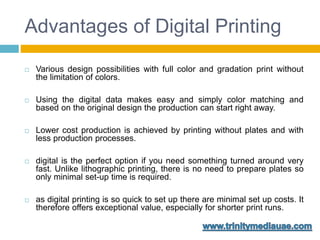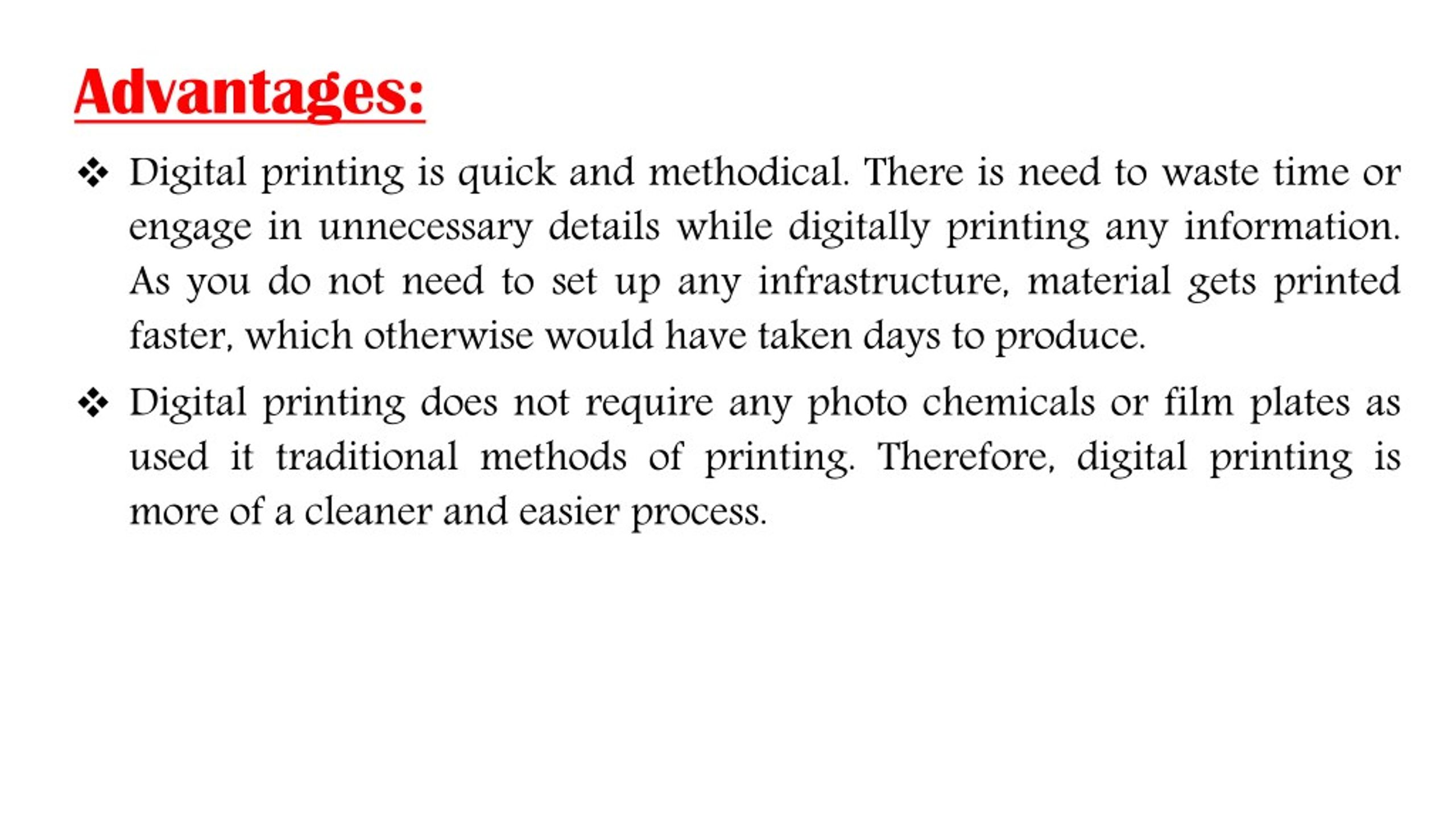Digital Printing Can Be Fun For Everyone
Wiki Article
9 Simple Techniques For Digital Printing
Table of ContentsA Biased View of Digital PrintingThe Greatest Guide To Digital PrintingSome Known Details About Digital Printing Top Guidelines Of Digital PrintingAn Unbiased View of Digital PrintingNot known Facts About Digital Printing
Variable data printing, such as straight mail with individualized codes and addresses, is ideally fit for digital printing. Digital fast printing only requires four actions of style, evaluation, printing and binding to obtain everything done. Digital quick printing has an unrivaled benefit: print on demand.According to PMMI, digital printing enables brand names and suppliers to respond quickly to client needs while improving the supply chain, reducing warehousing price and waste, and enjoying faster time to market. That all noises great, however just how does this modern technology do all that? The significant differentiator of these technologies is that there are no set up costs and no plates with electronic printing.
The Greatest Guide To Digital Printing
According to Wikipedia, the best difference in between electronic printing and standard techniques such as lithography, flexography, gravure, or letterpress - Digital Printing is that there is no requirement to replace printing plates in electronic printing, whereas in these analog printing methods the plates are consistently changed. This leads to quicker turn-around time and reduces cost when using electronic printing.Rapid production implies obtaining your product to market faster. It likewise indicates it's simpler and faster to make modifications in the future, when you alter a recipe, add a SKU, or develop seasonal packaging. Digital printing is extremely flexible, so it's simple to make changes to the bundle style quickly. It all goes back to home plates.
With traditional printing techniques, short-run printing is simply not possible. Due to the fact that a wonderful layout can make or damage your item, digital printing constantly develops high-grade, clear and vibrant graphics each time.
Digital printing is the process of printing digital-based pictures directly onto a range of media substratums. There is no need for a printing plate, unlike with balanced out printing. Digital data such as PDFs or desktop computer publishing files can be sent straight to the digital printing machine to publish theoretically, picture paper, canvas, fabric, synthetics, cardstock and various other substrates.
See This Report on Digital Printing
According to PMMI, electronic printing allows brand names and suppliers to respond swiftly to customer demands while boosting the supply chain, decreasing warehousing price and waste, and delighting in faster time to market. That all sounds wonderful, yet just how does this technology do all that? The significant differentiator of these technologies is that there are no set up charges and no plates with digital printing.This results in quicker turn-around time and decreases price when using digital printing.

The Facts About Digital Printing Revealed
With traditional printing approaches, short-run printing is simply not feasible. Because a wonderful design can make or damage your item, electronic printing consistently creates premium, clear and vibrant graphics each time.
According to PMMI, electronic printing allows brand names and makers to respond quickly to consumer needs while enhancing the supply chain, lowering warehousing expense and waste, and enjoying faster time to market. That all audios fantastic, however how does this technology do all that? The significant differentiator of these modern technologies is that there are no set-up fees and no plates with electronic printing.
Not known Factual Statements About Digital Printing
According to Wikipedia, the biggest distinction between digital printing and conventional methods such as lithography, flexography, gravure, or letterpress is that there is no demand to change printing plates in digital printing, whereas in these analog printing approaches the plates are repetitively changed. This leads to quicker turn-around time and decreases price when making use of digital printing.Quick production suggests look these up getting your product to market faster. It likewise indicates it's easier and faster to make changes in the future, when you transform a recipe, include a SKU, or create seasonal packaging. Digital printing is highly adaptable, so it's simple to make modifications to the bundle design swiftly. Everything goes back to the plates.
check my source

Getting My Digital Printing To Work
Digital printing is the process of printing digital-based pictures directly onto a selection of media substratums. There is no demand for a printing plate, unlike with offset printing. Digital data such as PDFs or desktop computer publishing documents can be sent out straight to the digital printing press to publish on paper, picture paper, canvas, textile, synthetics, cardstock and various other substratums.Report this wiki page